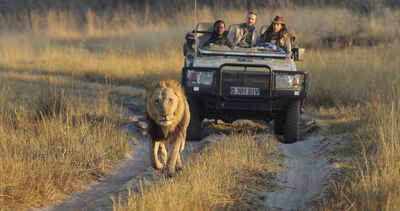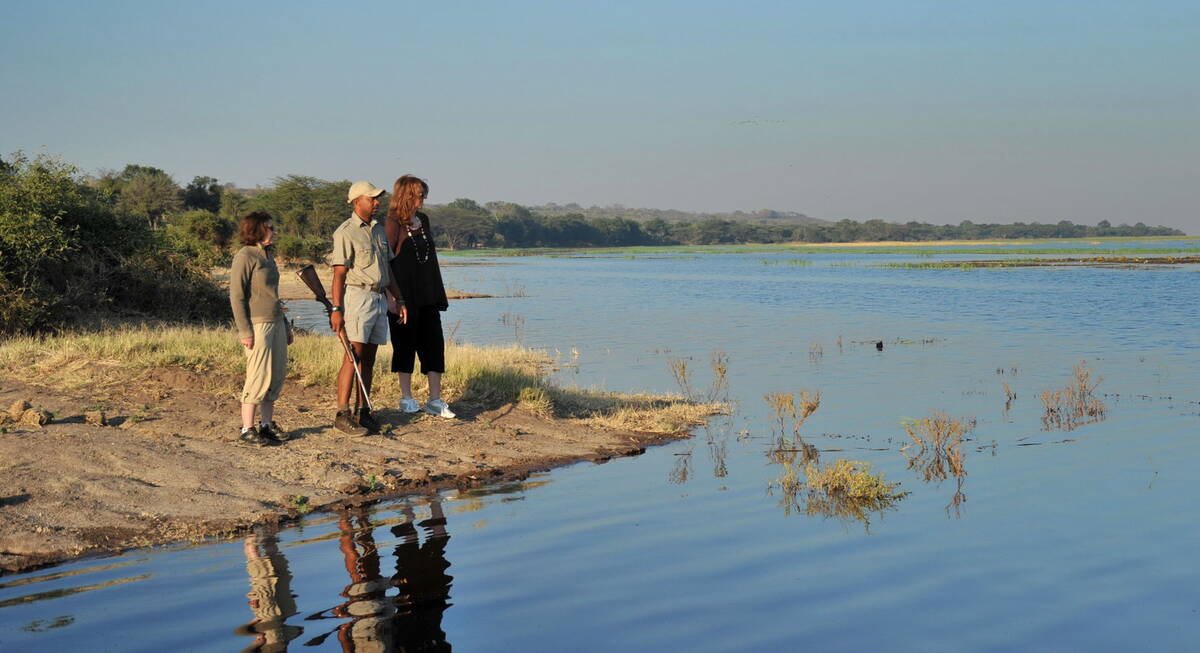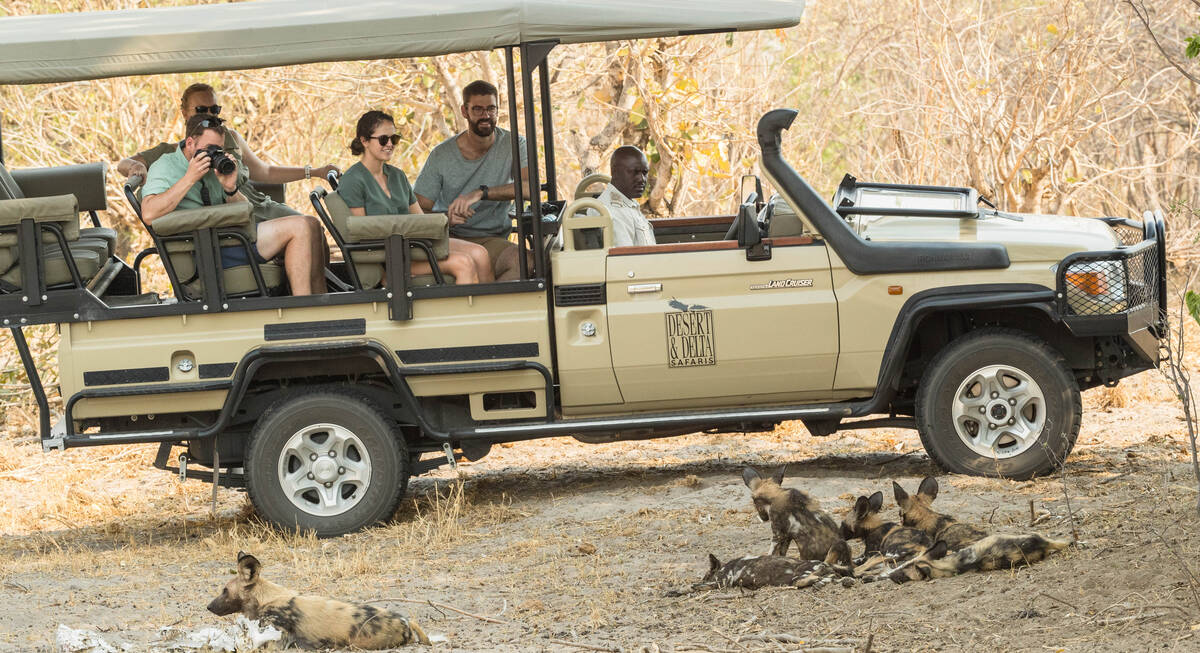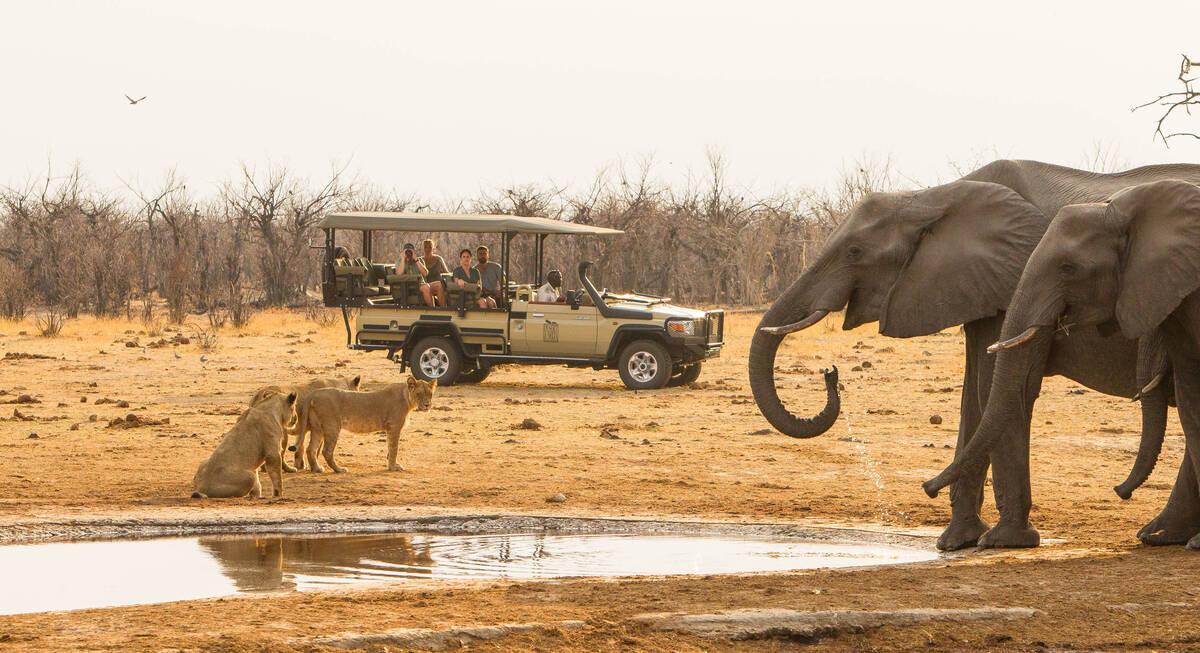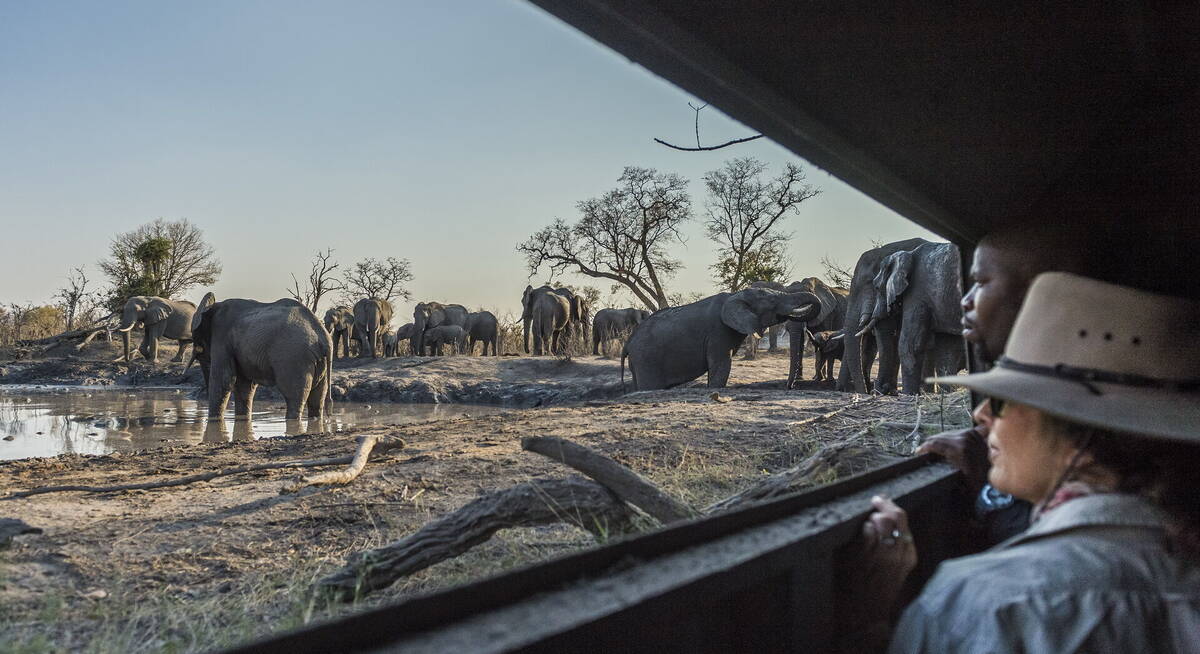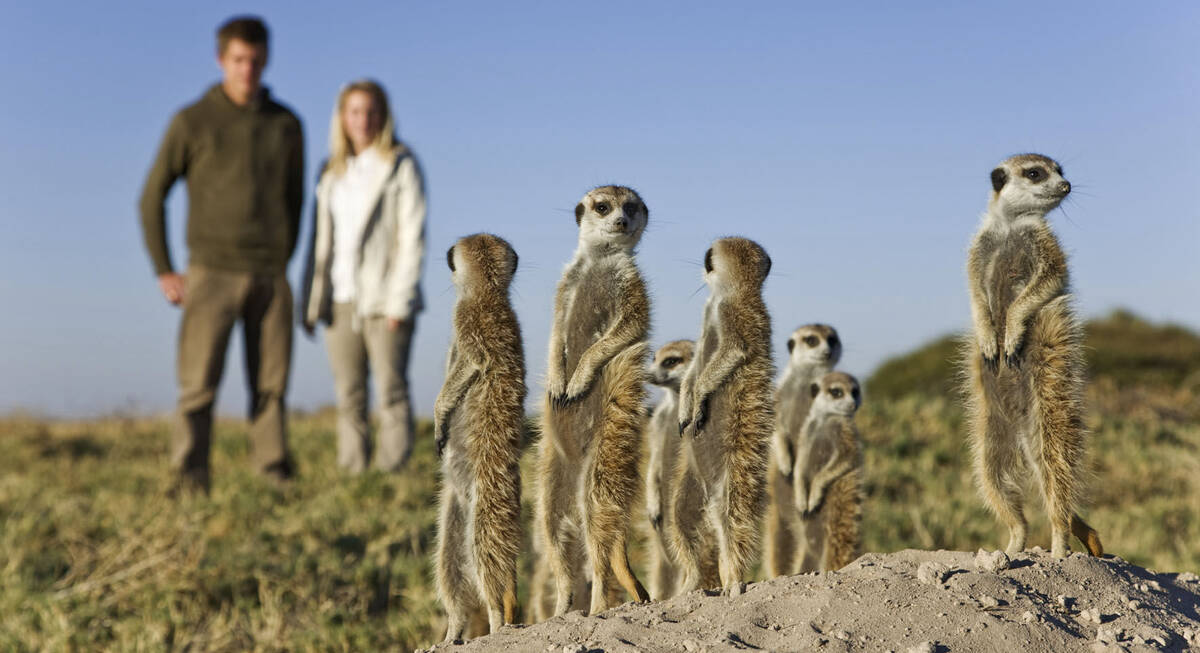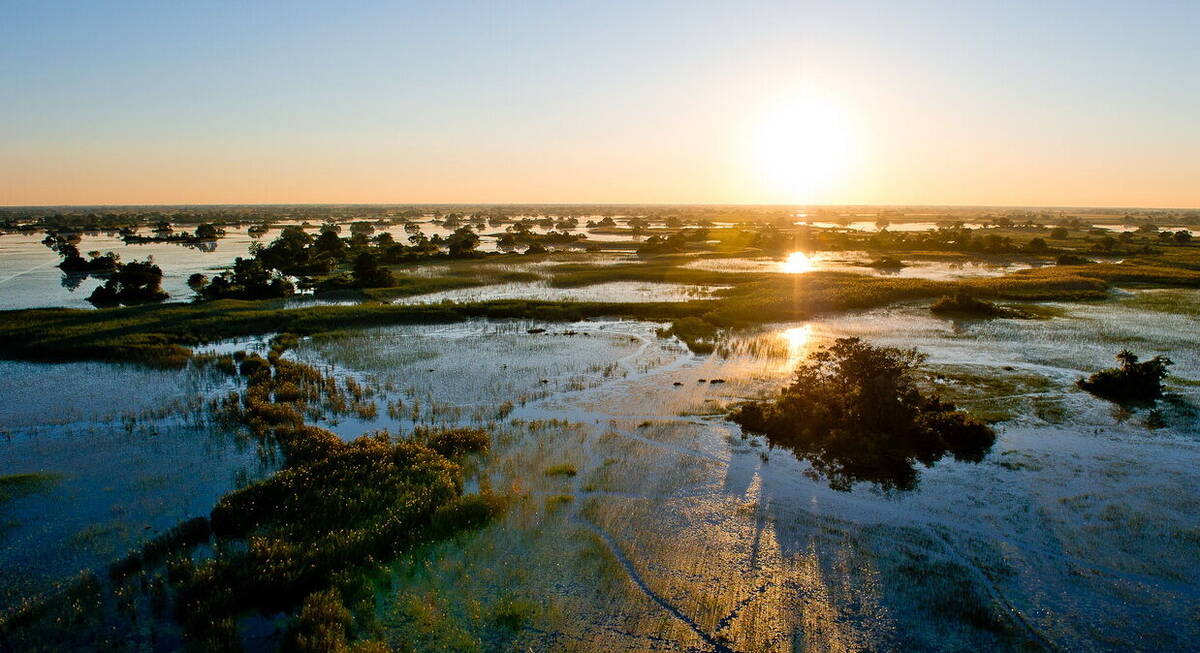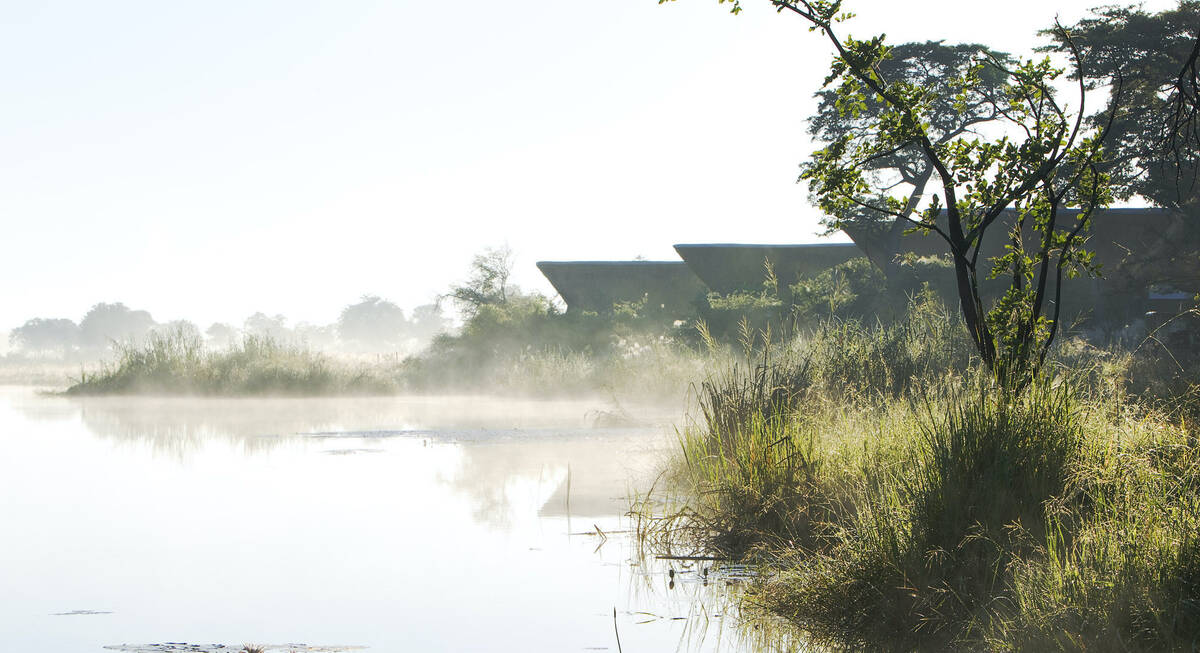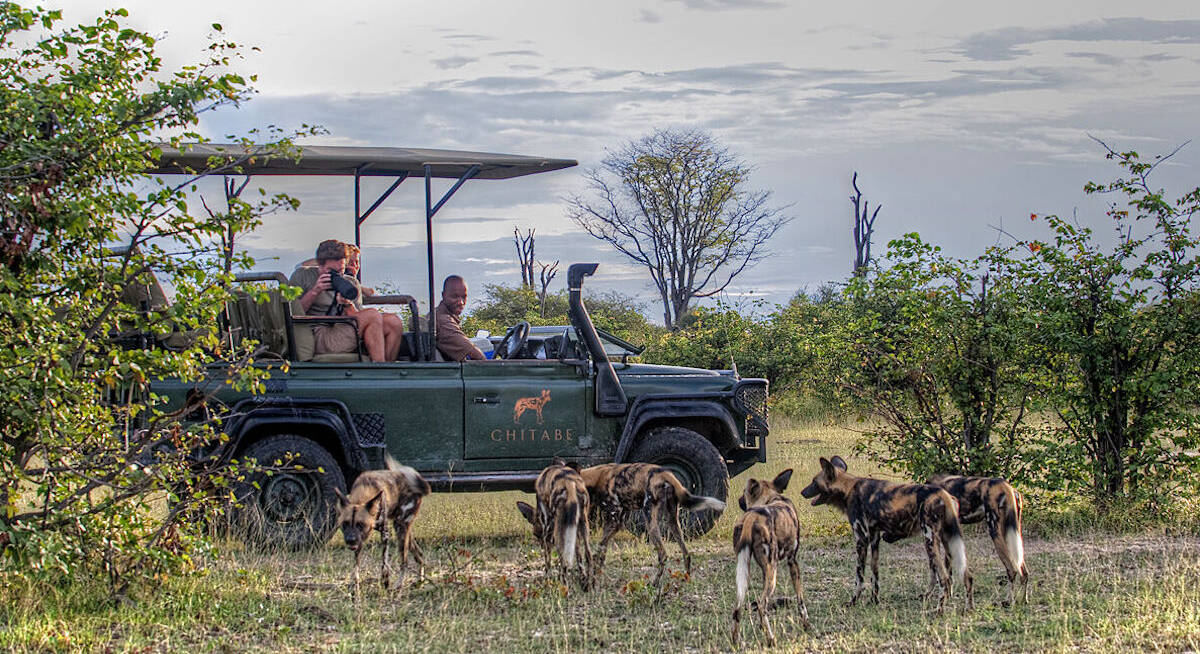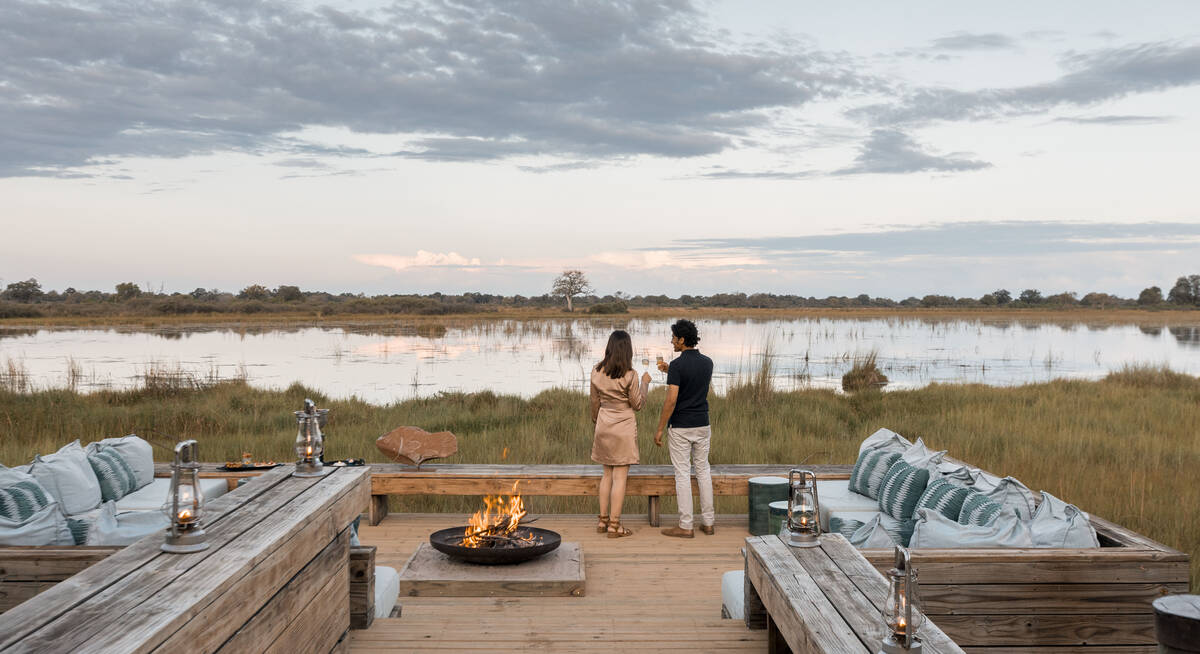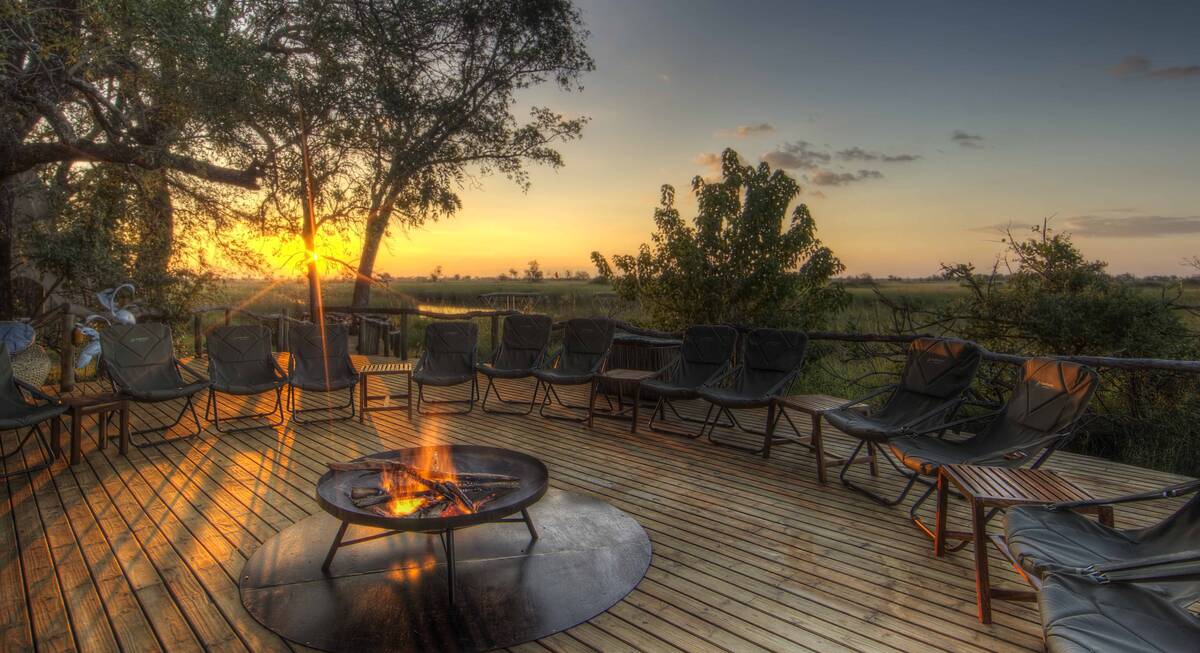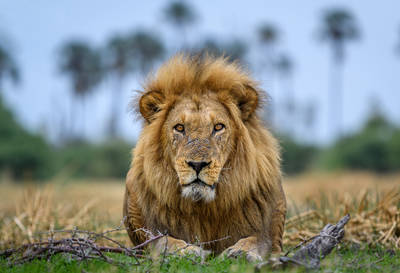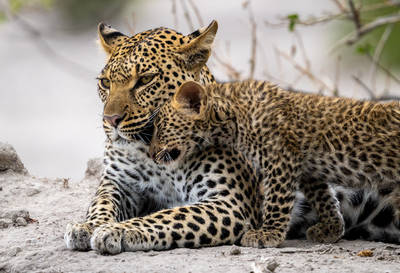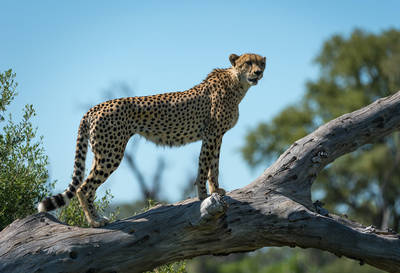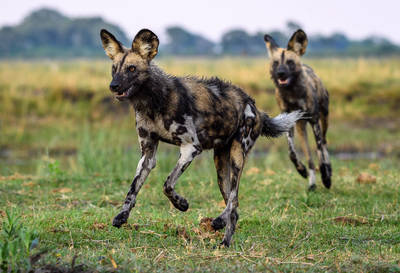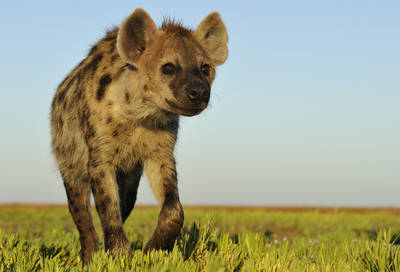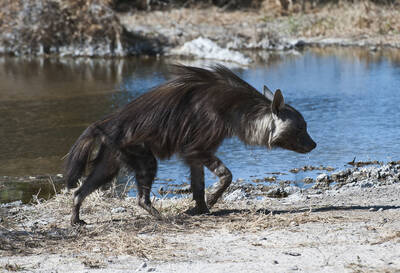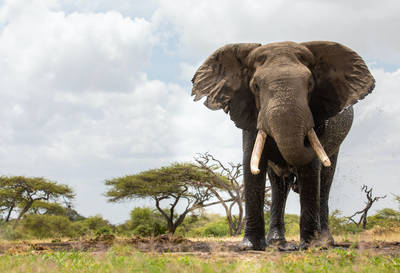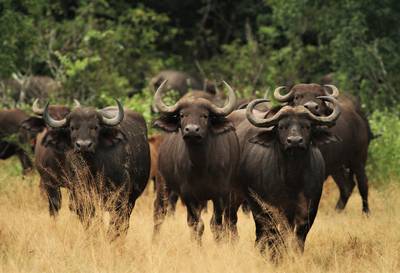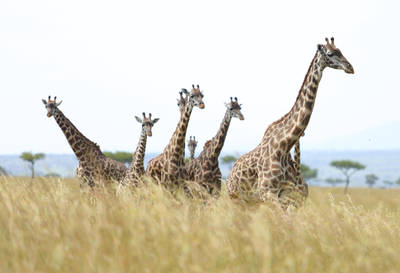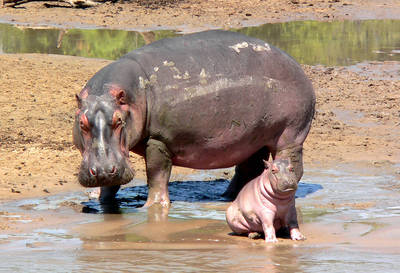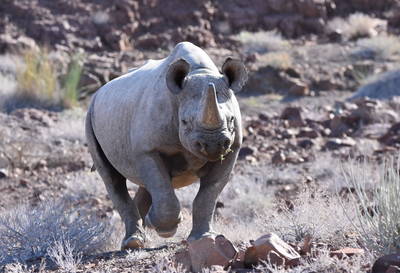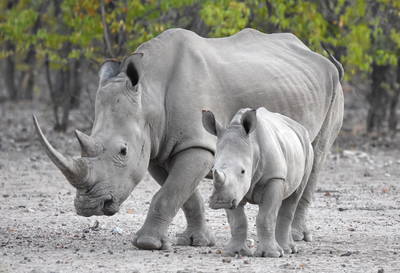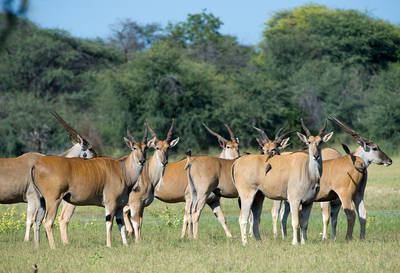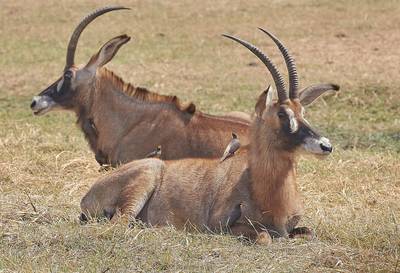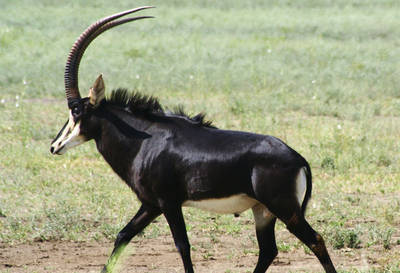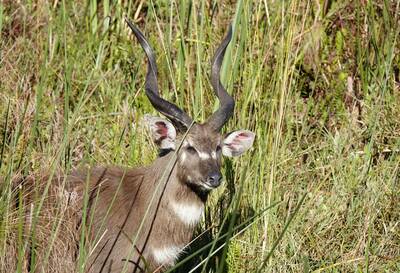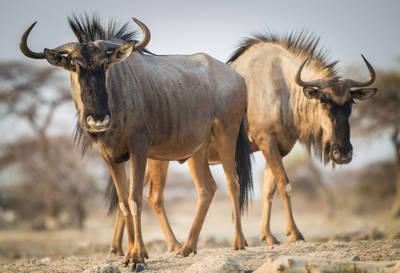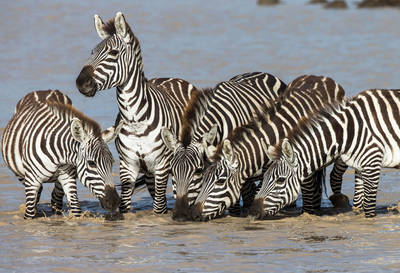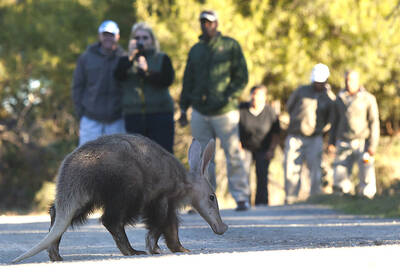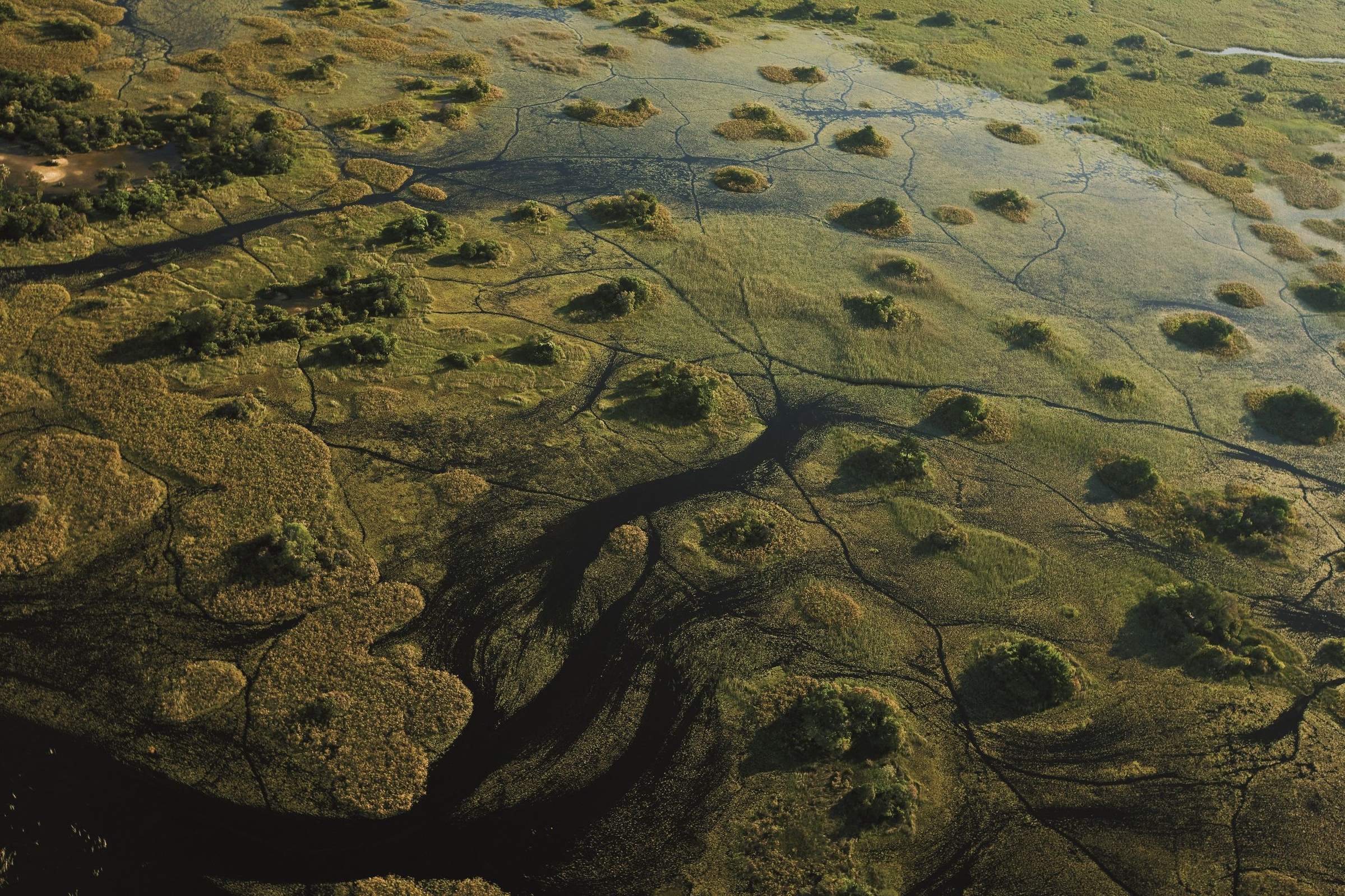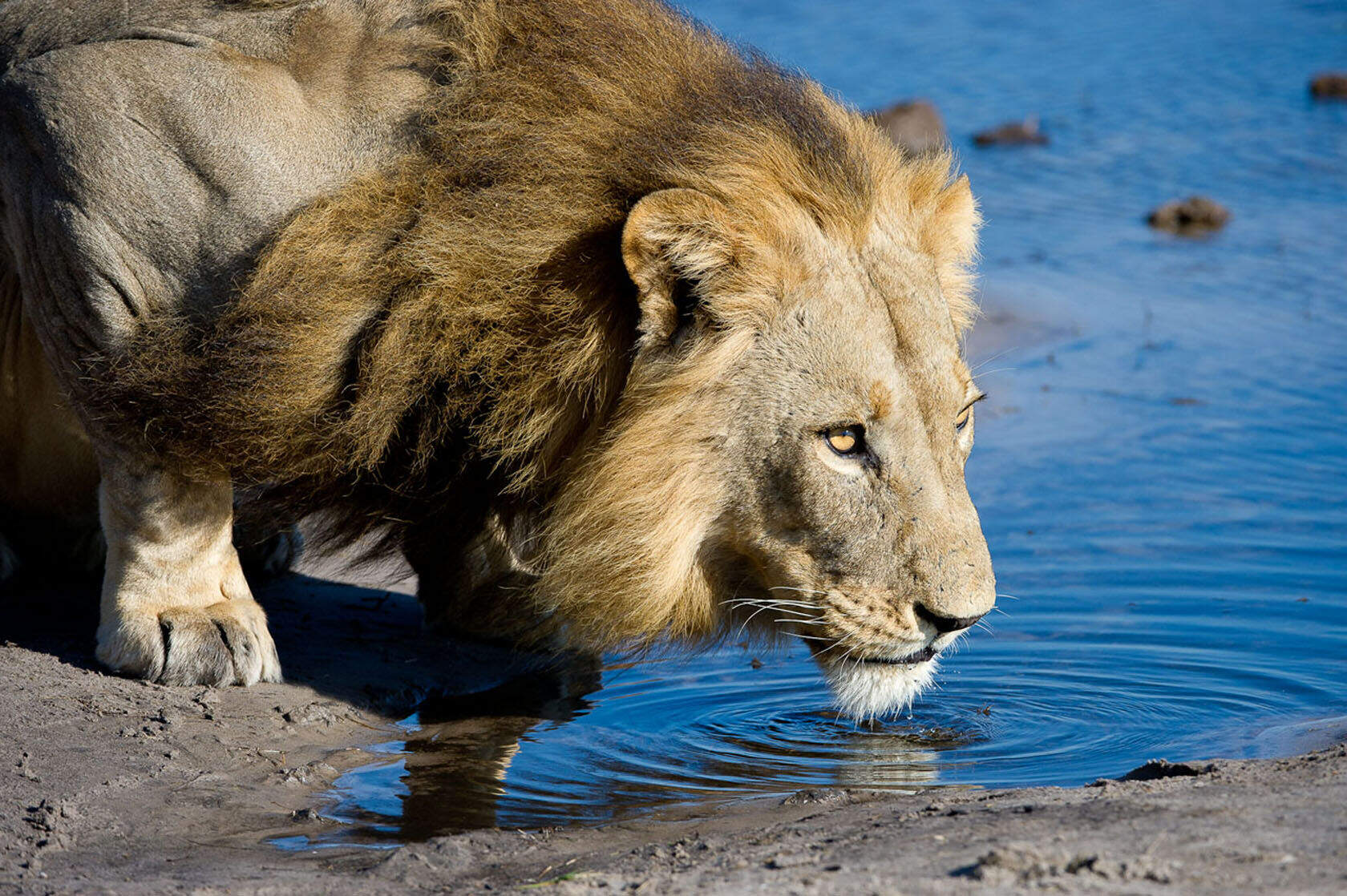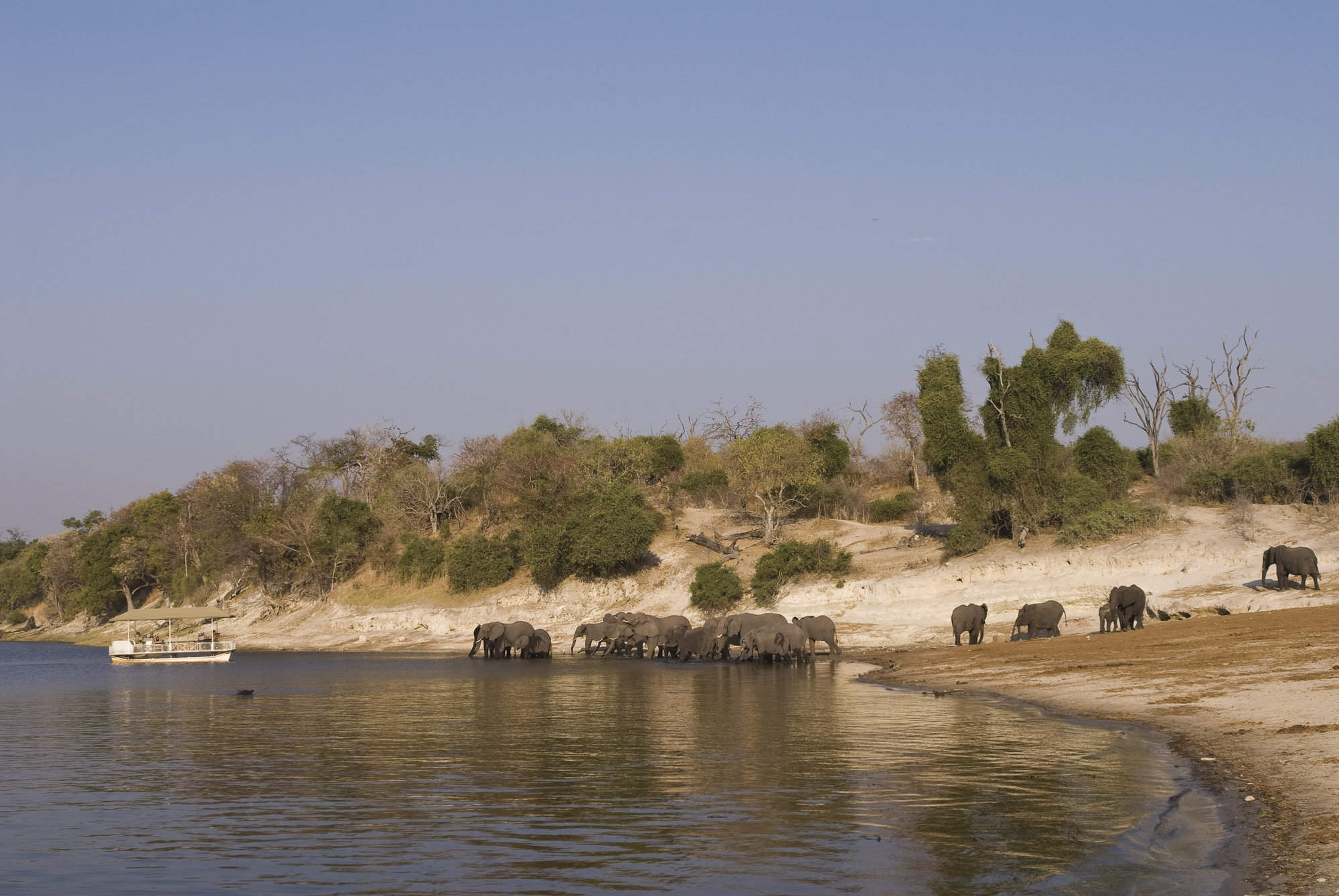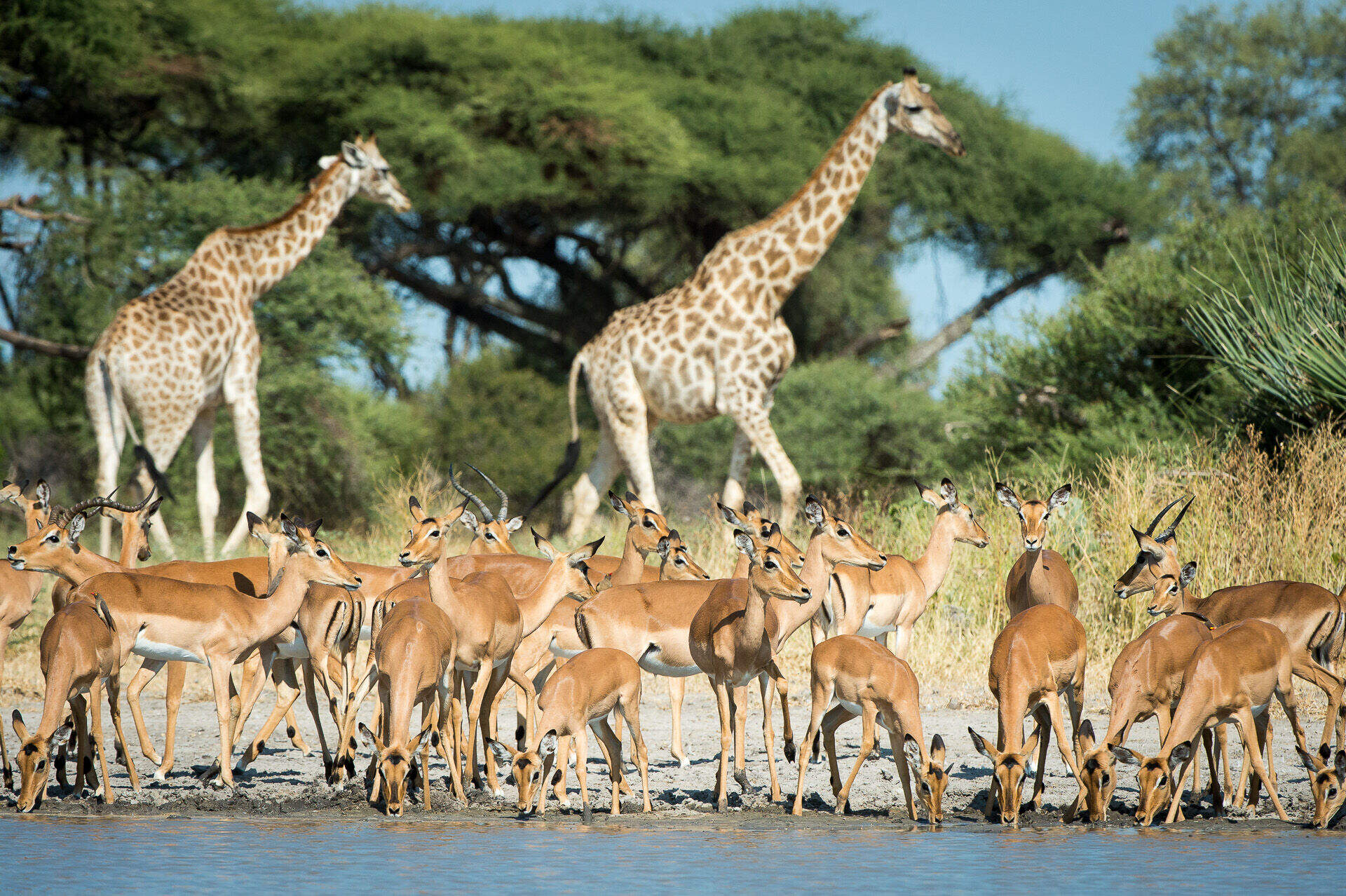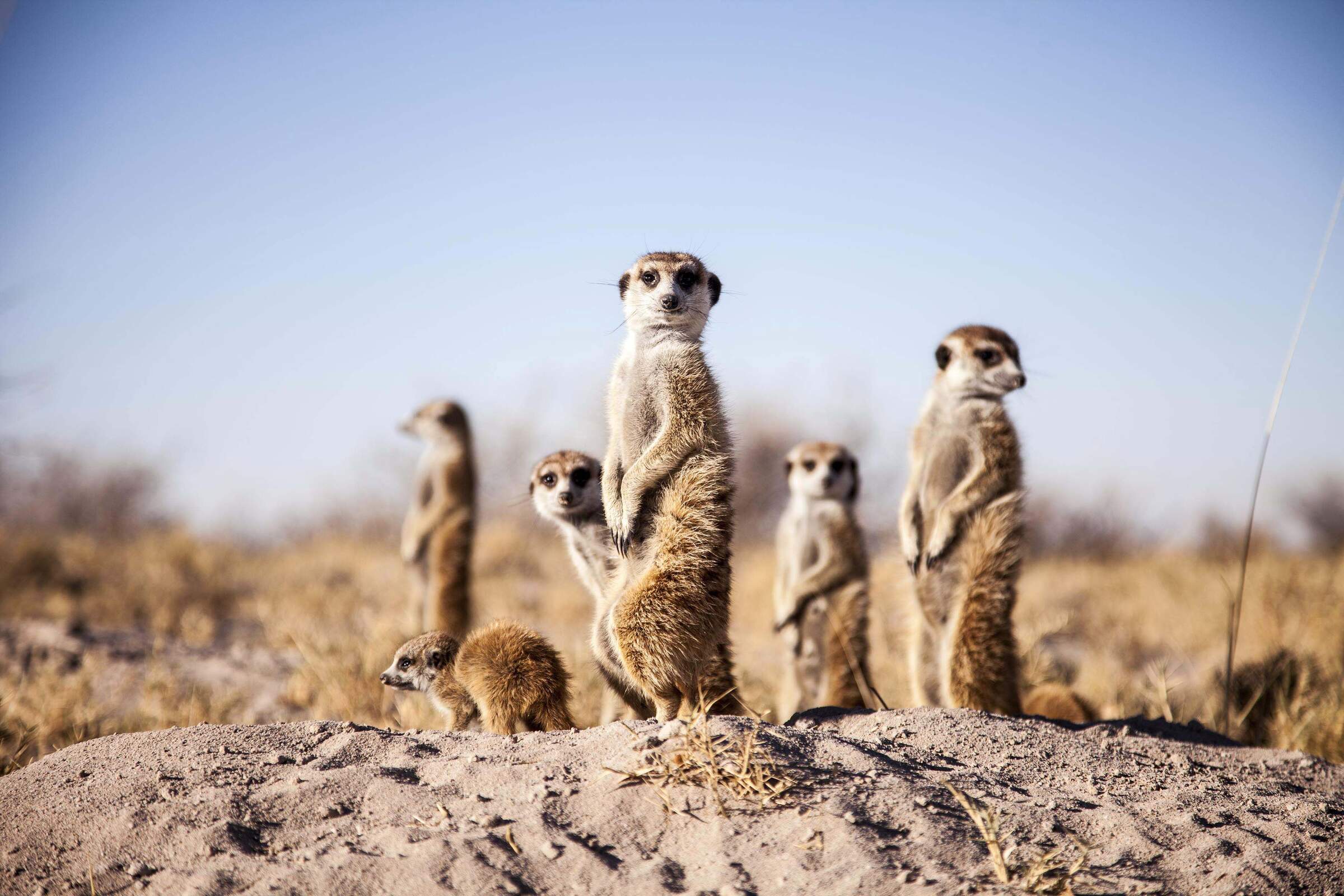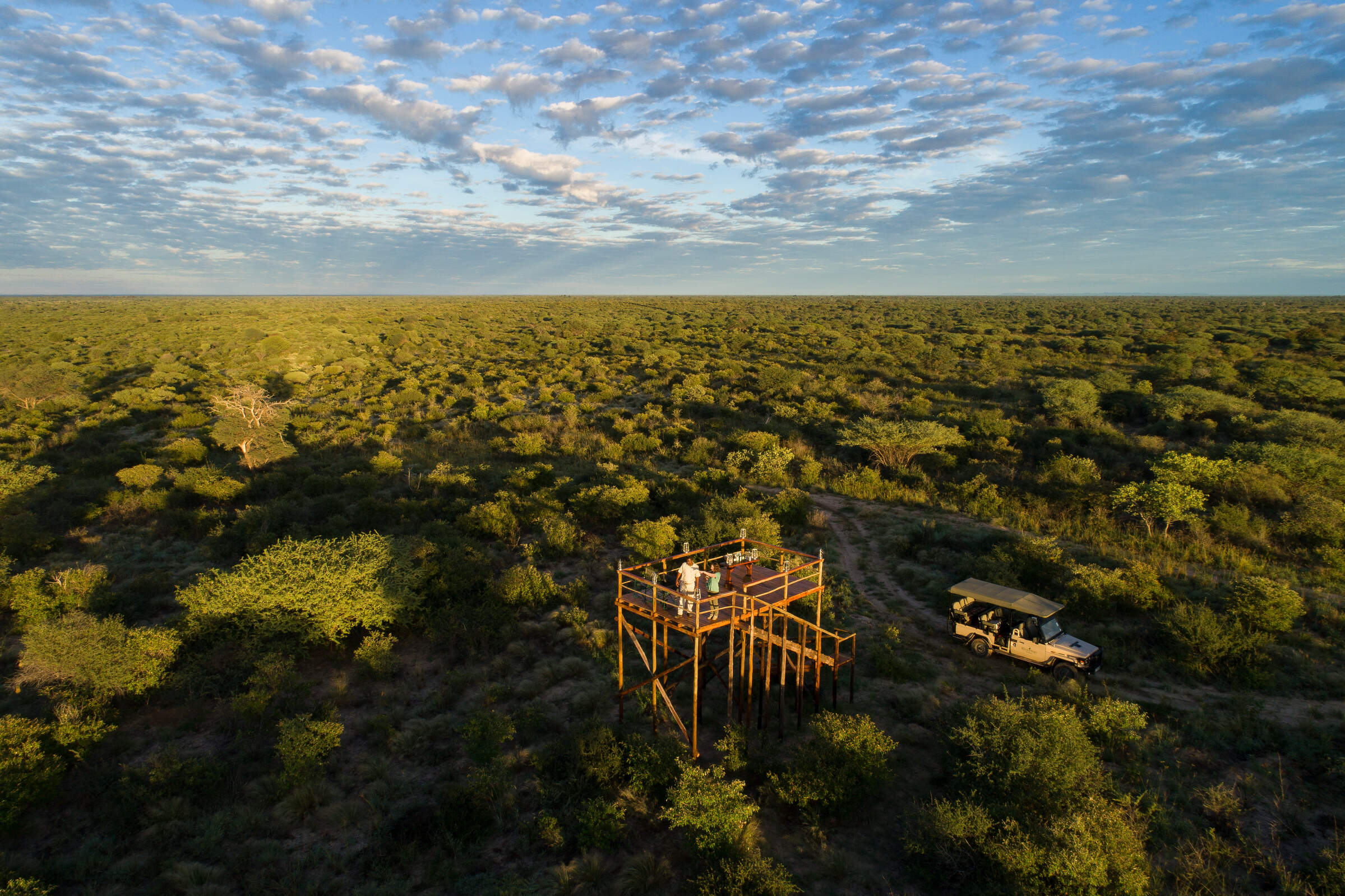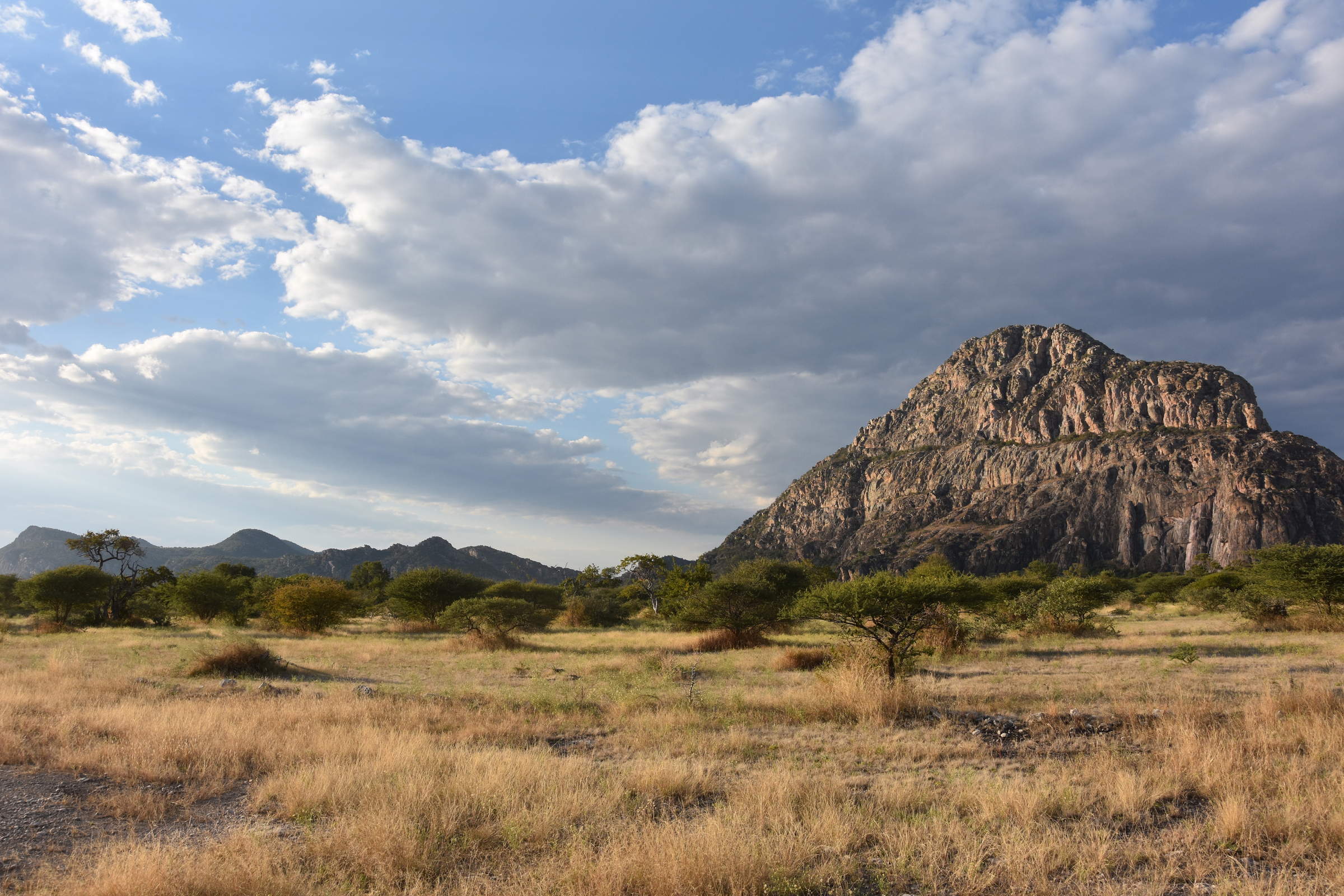Maps of Botswana: two styles
Take a look at the satellite map of Botswana, below, and the geography of northern Botswana is thrown into graphic relief. Even at this scale, the dramatic sweep of the Okavango Delta, fanning out from the broad Panhandle as it enters the country in the north-west, stands out against the surrounding, largely arid terrain. Most of Botswana’s main safari camps are found within the wider parameters of the Delta, but some are clustered in the Kwando-Linyanti area to the north-east and along the Chobe River within Chobe National Park. To find the location of these and other safari camps and lodges, just zoom in on the map.
To the south-east, the huge white expanse of the Kalahari's Salt Pans is clearly visible, while south again is the vast emptiness of the Central Kalahari Game Reserve. With just a handful of safari camps in these areas, visitors are a rarity – but the rewards can be significant.
Our map of Botswana
This a sketch map of Botswana – showing its key road arteries, national parks, towns, and areas of interest for visitors.
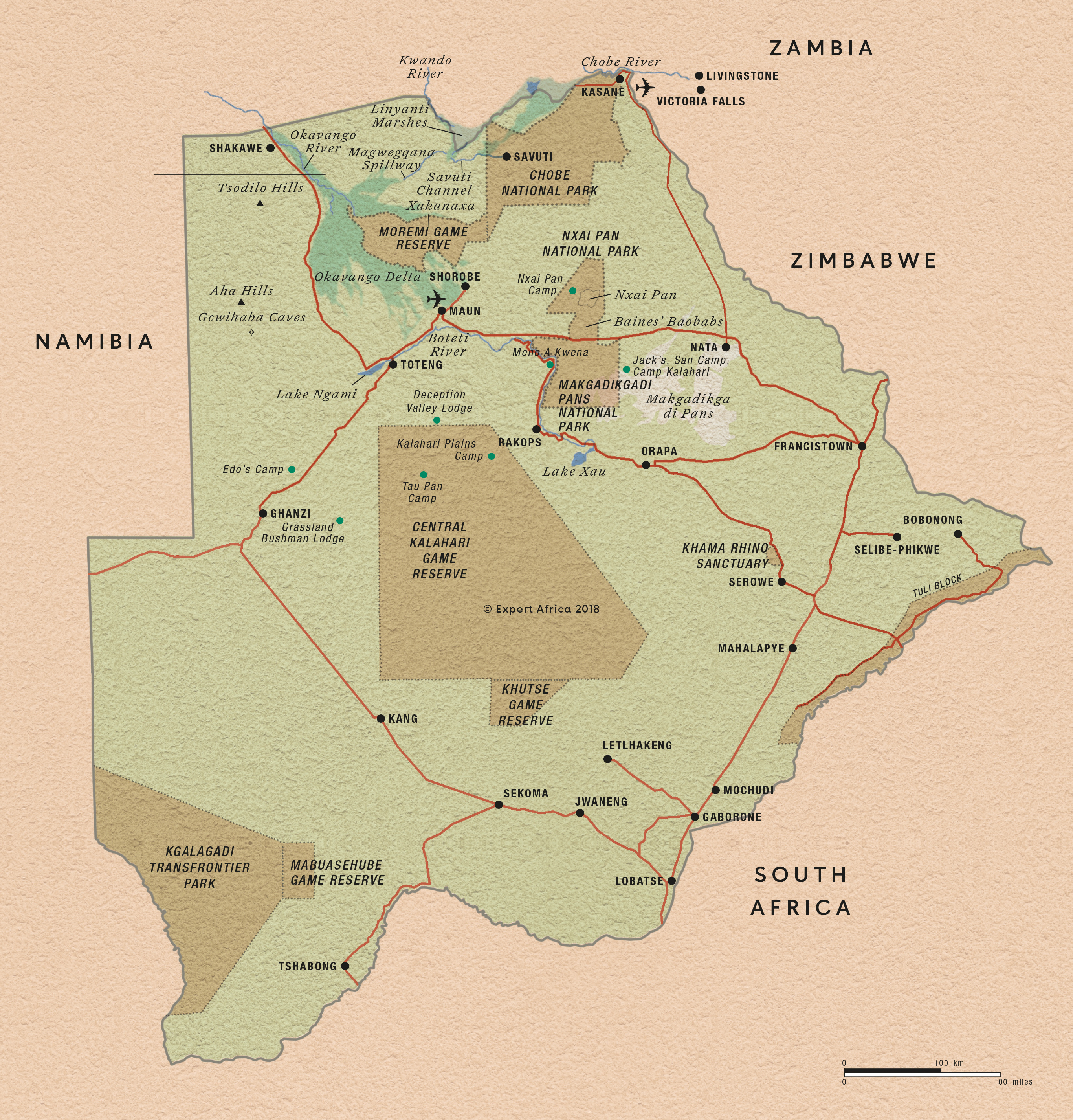
Google map of Botswana - key safari areas
Even at this scale – the huge expanse of the Kalahari's Salt Pans are visible as a blue-white splodge, just below the relevant bubble. Zoom in by one level on the scale to see the Okavango delta more clearly, entering Botswana in the north-east (where the 'Okavango Panhandle' marker is), and then fanning out. It's in this area that most of the main safari camps are.
Click onto any of the markers, and follow the links in the bubbles, for maps of these areas with precise locations for the various safari camps and lodges
Our top safaris in Botswana
Here are 26 great Botswana safaris to inspire you.
When to go to Botswana
Our month-by-month guide to the best time for visiting Botswana
Jan
Feb
Mar
Apr
May
Jun
Jul
Aug
Sep
Oct
Nov
Dec
Botswana in January
January is at the peak of Botswana’s rainy season. These rains are often in the evening and are short but heavy, with occasional thunderstorms. Temperatures will still be high but cooler than October–December. Animals are generally dispersed, and not easy to spot, with the best game viewing found in the north of Chief’s Island and on the eastern and southern sides of the Okavango Delta.
January is also one of the best months to see the zebra and wildebeest migration in the Makgadikgadi salt pans and at Nxai Pan. Migratory birds abound throughout northern Botswana, along with a large number of breeding flamingos in the flooded salt pans. Rates are generally relatively low, making this a good time to visit on a budget.
- Temperatures are still warm, with occasional thunderstorms
- The bush feels alive; birdlife is at its most spectacular
- Big game is dispersed
- Zebra & wildebeest migration at its height
- Availability in lodges and camps is often very good
Our view
A good time to visit, with pros & cons
Weather in January
Botswana in February
The weather in February is very similar to January, with heavy rain most days – often towards evening – and temperatures on the high side, albeit cooling off from the rains and surface water. Across northern Botswana, the landscape feels green and alive; insects and smaller animals are more easily seen, and many birds and animals are raising their young. However, the rains have created pools and waterholes in the bush and thicker vegetation and tall grass makes it trickier to spot larger animals.
Further south, the game viewing is beginning to pick up in the Central Kalahari Game Reserve. Visitor numbers remain low, with attendant rates and availability in camps and lodges.
- Temperatures still warm with occasional thunderstorms
- Many animals with young; birdlife at its most spectacular
- Big game is dispersed
- Game viewing picking up in the Central Kalahari
- Visitor numbers are low, so camp availability can be very good
Our view
This is not a great time to visit
Weather in February
Botswana in March
March usually sees Botswana’s main rains starting to tail off. Many days will be clear, with a strong sun raising temperatures. On some days clouds will build, and the late-afternoon may see a short thunderstorm. Across the country, the landscape is green and alive. Many birds and animals are finishing raising their young. Much of the migration is now moving north towards the Savute area or Chobe National Park, though thick vegetation still makes it trickier to spot even larger animals.
March is one of the best times to be in the Central Kalahari Game Reserve, where many of the pans fill up and animals come to drink, closely followed by predators. With few visitors in most areas, rates may still be relatively low.
- Variable weather: rains tailing off but still hot
- Occasional small thunderstorms
- Many animals finish raising their young; birdlife still spectacular
- The best time to visit the Central Kalahari Game Reserve
- Few tourists visit during March, so rates often low
Our view
A good time to visit, with pros & cons
Weather in March
Botswana in April
During April the rains have usually stopped, though there may be still be the odd late downpour. This results in clear skies and a lovely green, lush landscape. Night-time temperatures usually start to drop during April with this being most noticeable in the Central Kalahari and the Makgadikgadi areas. The Central Kalahari is really coming into its own at this point and from April through to May/June the Savute region is a particular favourite of ours, with good predator/prey interaction.
In much of northern Botswana, the camps are coming into their “shoulder” season, so rates are on the rise but still relatively low.
- Evening temperatures cooling with just the odd shower
- Northern Botswana is green and lush
- Many animals still with young; good predator/prey interaction
- Central Kalahari and Savute the best places for wildlife
- A popular shoulder season time to book. Rates relatively low
Our view
A good time to visit, with pros & cons
Weather in April
Botswana in May
May is a very popular month to visit Botswana, often the last month of the “shoulder” season before camp rates hit their peak. While there is very little chance of rain, the annual floods from Angola are starting to make their way through the northern part of the Delta, and will eventually reach the majority of the Okavango late June.
With cooler temperatures morning and evening, predator activity tends to be higher, although tall grasses can still obstruct game viewing. With cool crisp evenings, and the game viewing really picking up, this is the favourite time to visit for many of our team – and camp bookings throughout Botswana are snapped up quickly.
- Cool mornings and evenings with little chance of rain
- Game viewing is beginning to pick up
- Predator activity increasing, though grasses still quite high
- Last month of “shoulder” season for most camps
- Availability goes quickly throughout Botswana
Our view
A very good time to visit
Weather in May
Botswana in June
June is the real start of the dry season. Temperatures are still cool in the morning and evenings with night-time temperatures sometimes reaching freezing, rising to 25–30 degrees Celsius during the day, with blue skies. Along with this comes a certain clarity to the air, favourable for serious photographers. Surface water and waterholes begin to dry up during this period and many animals begin to congregate around the remaining areas with water.
Visibility is improving as the grass is beginning to die back, and game viewing is very good everywhere, with particular improvement in the Kwando–Linyanti areas. Not surprisingly, camp availability is becoming scarce and rates are high.
- Warm, comfortable days; cold nights, morning & evenings
- Air clarity favours serious photographers
- Wildlife is gravitating to waterholes, making game-viewing productive
- Grasses beginning to die back
- Most camps are into peak season, with rates correspondingly high
Our view
Fantastic: the very best time to visit
Weather in June
Botswana in July
Evenings and mornings are still cool in July, and this combined with great game viewing makes it one of the most popular times to visit Botswana. Vegetation is really thinning out now making game easier to spot, with the few remaining waterholes attracting lots of wildlife. The north-eastern side of Chobe National Park, along the Chobe River, is also very rewarding, although this area can become very busy.
Game viewing is extremely good in the Khwai areas, too, but again, this is a public area and – unlike in the private concessions of the Delta – vehicle numbers can be high. Camps are now very much into the peak season, and tend to be full.
- Comfortable days; cold nights, morning & evenings
- Game viewing very good as vegetation dies back and waterholes dry out
- Chobe Riverfront and Khwai areas become very busy
- Private concessions helps to avoid potentially high vehicle numbers
- Now very much into peak season
Our view
Fantastic: the very best time to visit
Weather in July
Botswana in August
August is a popular time to visit Botswana, coinciding with the European summer holidays, and camp availability is difficult. Temperatures are generally cool at night, and comfortable during the day, although towards the end of the month they can rise above 35 degrees Celsius (albeit with low humidity). Cloudless skies bring spectacular star-gazing. Wildlife has congregated around the few remaining water sources, and much of the vegetation has now died back, so wildlife viewing tends to be varied and rewarding, particularly in the Okavango Delta.
Depending on the rains in Angola this can also be one of the best times to see the delta floods at their peak.
- Dry, warm days, with mainly cool nights
- Cloudless skies with spectacular stars at night
- A fantastic time for wildlife watching, particularly in the Okavango
- Traditionally one of the best times to see the Delta in full flood
- Peak season: so high rates and many lodges full
Our view
Fantastic: the very best time to visit
Weather in August
Botswana in September
September is another favourite month for some of our team members. Daytime temperatures are getting warmer, but nights remain cool. With the drier conditions, most of the greenery has faded from the landscape, and dust or even smoke create hazy conditions that aren’t great for photographers – though this does result in fantastic sunsets.
This is another extremely good month for game viewing, with large numbers of elephant and buffalo congregating in the Chobe region and migrant birds begin to return to Botswana. Rates remain high – and availability correspondingly low.
- Warmer days and cool nights
- One of the best months for wildlife viewing
- Large congregations of elephant & buffalo in the Chobe region
- Hazy conditions less good for photographers, but brilliant sunsets
- High season rates; many lodges & camps are full
Our view
Fantastic: the very best time to visit
Weather in September
Botswana in October
October is the one of the hottest months of the year, and usually one of the driest. Towards the end of the month the chances of rain can increase, and along with this can come greater humidity. The air is usually dry and hazy, making photography more challenging, but the lack of water and vegetation result in very good big-game viewing.
Water levels are now much lower, so water-based activities such as boating, mokoro trips and fishing cease in many of the camps which are not on major tributaries.
- Hot temperatures, with the chance of rain towards the end of the month
- Great big-game viewing
- Less opportunity for water activities in camps as floods recede
- Hazy air not great for photographers
- Final month of the peak season in camps
Our view
Fantastic: the very best time to visit
Weather in October
Botswana in November
November usually marks the end of the dry season in Botswana, when increasing temperatures drive a rise in humidity, sometimes culminating in the first rains. These are often short but very heavy showers in the late afternoon or during the night, and can be spectacular. The rains lower the temperatures slightly but bring a flush of green back into the dry landscapes. As waterholes in surrounding areas fill, wildlife will gradually begin to disperse as it is not restricted by the availability of water.
November is a great time for birdwatching, with the arrival of many migrant birds. The first couple of weeks are very popular with travellers looking for great game viewing at lower rates as Botswana enters the “shoulder” season.
- Hot in the middle of the day; sometimes humid
- Heavy showers increasingly likely as the month progresses
- Wildlife watching still good, but less reliable once it rains
- Migrant birds start to arrive
- “Shoulder” season brings mid-range rates in camps
Our view
A good time to visit, with pros & cons
Weather in November
Botswana in December
The rains in Botswana have now started, bringing some respite to the high temperatures. Game viewing becomes harder as wildlife is more dispersed but great sightings can still be had in the right areas such as Khwai and the Kwara and Mombo concessions.
Areas such as the Makgadikgadi Pans change completely with the salt pans becoming covered in a shallow layer of water attracting large numbers of breeding flamingos. Low-season rates at many camps are a draw.
- Temperatures starting to fall from the highs of October/November
- Very high chance of rain, usually large heavy storms for short periods
- Flamingos return to breed at the Makgadikgadi Pans
- Wildlife more dispersed, so game viewing more challenging
- Typically low-season rates in the camps
Our view
A good time to visit, with pros & cons
Weather in December
Where to find the key wildlife species in Botswana
Understand the detail of where our travellers have most frequently seen the main big game species in Botswana.
